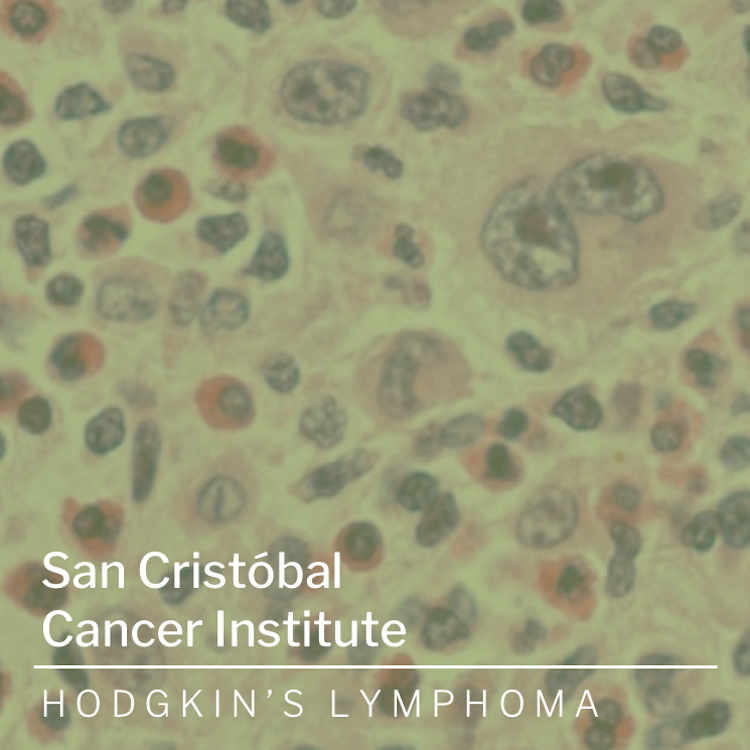
Hodgkin’s Lymphoma Facts

Hodgkin’s lymphoma — formerly known as Hodgkin’s disease — is a cancer of the lymphatic system, which is part of your immune system. It may affect people of any age, but is most common in people between 20 and 40 years old and those over 55.
Overview
In Hodgkin’s lymphoma, cells in the lymphatic system grow abnormally and may spread beyond it. Hodgkin’s lymphoma is one of two common types of cancers of the lymphatic system. The other type, non-Hodgkin’s lymphoma, is far more common. Advances in diagnosis and treatment of Hodgkin’s lymphoma have helped give people with this disease the chance for a full recovery. The prognosis continues to improve for people with Hodgkin’s lymphoma.
Types
- Chronic lymphocytic leukemia: Chronic lymphocytic leukemia (CLL) is a type of cancer of the blood and bone marrow — the spongy tissue inside bones where blood cells are made.
- Cutaneous B-cell lymphoma: Cutaneous B-cell lymphoma is a rare type of cancer that begins in the white blood cells and attacks the skin. Cutaneous B-cell lymphoma begins in the B cells — one type of disease-fighting white blood cells called lymphocytes.
- Cutaneous T-cell lymphoma: a rare type of cancer that begins in the white blood cells and attacks the skin. Cutaneous T-cell lymphoma is one of several types of lymphoma collectively called non-Hodgkin lymphoma.
- Lymphoma: Lymphoma is a cancer of the lymphatic system, which is part of the body’s germ-fighting network.
Symptoms
Signs and symptoms of lymphoma may include:
- Painless swelling of lymph nodes in your neck, armpits or groin
- Persistent fatigue
- Fever
- Night sweats
- Shortness of breath
- Unexplained weight loss
Diagnosis
Tests and procedures used to diagnose lymphoma include:
- Physical exam. Your doctor checks for swollen lymph nodes, including in your neck, underarm and groin, as well as a swollen spleen or liver.
- Removing a lymph node for testing. Your doctor may recommend a lymph node biopsy procedure to remove all or part of a lymph node for laboratory testing. Advanced tests can determine if lymphoma cells are present and what types of cells are involved.
- Blood tests. Blood tests to count the number of cells in a sample of your blood can give your doctor clues about your diagnosis.
- Removing a sample of bone marrow for testing. A bone marrow aspiration and biopsy procedure involves inserting a needle into your hipbone to remove a sample of bone marrow. The sample is analyzed to look for lymphoma cells.
- Imaging tests. Your doctor may recommend imaging tests to look for signs of lymphoma in other areas of your body. Tests may include CT, MRI and positron emission tomography (PET).
Treatment
Which lymphoma treatments are right for you depends on the type and stage of your disease, your overall health, and your preferences. The goal of treatment is to destroy as many cancer cells as possible and bring the disease into remission. Lymphoma treatments include:
- Active surveillance. Some forms of lymphoma are very slow growing. You and your doctor may decide to wait to treat your lymphoma when it causes signs and symptoms that interfere with your daily activities. Until then, you may undergo periodic tests to monitor your condition.
- Chemotherapy. Chemotherapy uses drugs to destroy fast-growing cells, such as cancer cells. The drugs are usually administered through a vein, but can also be taken as a pill, depending on the specific drugs you receive.
- Radiation therapy. Radiation therapy uses high-powered beams of energy, such as X-rays and protons, to kill cancer cells.
- Bone marrow transplant. A bone marrow transplant, also known as a stem cell transplant, involves using high doses of chemotherapy and radiation to suppress your bone marrow. Then healthy bone marrow stem cells from your body or from a donor are infused into your blood where they travel to your bones and rebuild your bone marrow.
Resources
San Cristobal Cancer Institute offers a wide array of options to help our patients feel calm and supported during the process of screening, diagnosis and treatment, as well as getting back to life after cancer. Browse our alternatives for patients – including financial aid for those eligible – in our Patient Resources section.
If you’d like to learn more about Hodgkin’s Lymphoma through our San Cristóbal Education Resources, attend our events or learn about our Cancer Center, please contact us.
Knowledge is Power.
Education is one of our strongest tools at San Cristóbal Cancer Institute, empowering patients and their families with complete and updated information about more than a dozen types of cancer and providing first-hand knowledge through our dedicated team of cancer experts. If you’d like to know more, please get in touch with us. We look forward to offering you and your family powerful cancer awareness and the most comprehensive care.
